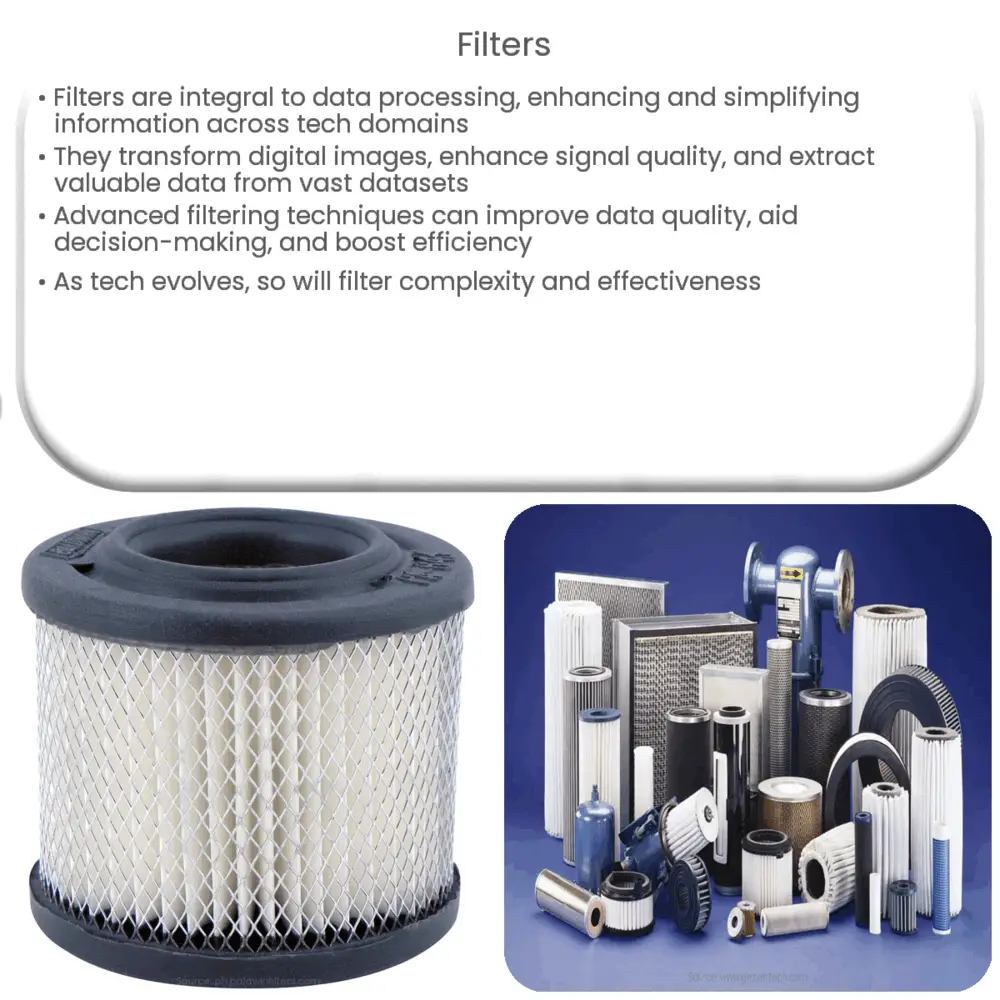Explore the diverse applications of filters in digital imaging, signal processing, and data analytics, enhancing data quality and processing efficiency.

Understanding the Concept of Filters
When we talk about filters in the realm of technology, we refer to a wide range of applications, from digital image processing to signal processing and data filtering in various types of software. Filters are crucial for the simplification and enhancement of data and information processing.
Digital Image Filters
In the context of digital images, filters play an essential role in transforming photos and enhancing their visual appeal. In simplest terms, an image filter is a software feature that changes the appearance of an image or part of it. Most commonly used in photography and graphics design applications, such filters can adjust brightness, contrast, color balance, and more.
- Sharpening Filters: They enhance the edges within an image, making it clearer and more distinct.
- Blur Filters: Conversely, blur filters are used to reduce image noise and detail.
- Color Filters: These filters can adjust hues, saturation, and luminosity, thereby changing the color balance of the image.
Signal Processing Filters
In signal processing, filters are used to enhance the quality of signals by reducing noise and other undesirable components. These filters can be either digital or analog, based on the nature of the signals they handle.
- Low-pass Filters: These filters allow signals with a frequency lower than a certain cutoff frequency to pass through and attenuate frequencies higher than the cutoff frequency.
- High-pass Filters: The exact opposite of low-pass filters, these allow signals with frequencies higher than a certain threshold to pass through.
- Band-pass Filters: Band-pass filters allow frequencies within a specific range to pass through, effectively filtering out frequencies outside the band.
Filters in data processing and signal handling applications are not only limited to these. There are more sophisticated types of filters like notch filters, band-stop filters, and others.
Data Filtering in Software
Data filtering in software is a process used to selectively extract useful information from a larger set of data. With the influx of massive amounts of data in the digital world, data filtering has become increasingly significant. This process is heavily used in fields like data analytics, data mining, and data visualization to handle vast datasets.
Data Filtering Techniques
There are several common techniques for data filtering in software applications:
- Sorting: This is one of the most basic filtering techniques where data is arranged in a specific order (ascending or descending) to simplify further analysis.
- Criteria-based Filtering: In this method, data is filtered based on certain criteria or conditions. Only the data that satisfies these conditions is selected.
- Search: A search is a specific form of filtering where data is scanned for a particular piece of information.
Benefits of Data Filtering
Effective data filtering offers numerous benefits:
- Enhanced Data Quality: By filtering out irrelevant or erroneous data, the overall quality of the data improves substantially.
- Better Decision Making: High-quality, filtered data enables more accurate analyses and predictions, leading to better decision making.
- Improved Efficiency: When unnecessary data is filtered out, the time and resources spent on processing the data can be significantly reduced.
Despite its apparent simplicity, the art and science of filtering are integral to the functioning of various sectors, from digital media to software development and signal processing. By enhancing the quality and usability of data, filters greatly contribute to the effectiveness and efficiency of digital technologies.
Conclusion
In conclusion, the concept of filters spans across various domains, each serving the essential function of improving and simplifying data. Whether it’s enhancing the aesthetic appeal of a digital image, reducing noise in signal processing, or aiding in the extraction of meaningful insights from vast datasets, the role of filters is ubiquitous and invaluable. As technology continues to advance, so will the complexity and effectiveness of filters, ensuring that we can manage, process, and interpret data in increasingly efficient and innovative ways.

